
I often hear parents complain their child won’t play alone, or will only play with a toy for minutes at a time. They are frustrated with so many toys scattered around the house, with children never helping put them away. There’s pressure to entertain kids all day with endless toys, and the store toy aisles are really tempting. Sometimes the chaos of child play can just be too much.
We know play is essential to a child’s development and it starts at home. The beauty of play is that it can literally happen anywhere, doing anything, with anyone! That’s great news for parents who want to foster their child’s learning through play at home.
Children truly don’t need hundreds of toys or a Pinterest-perfect play room to learn and have fun. They benefit most from an inviting and engaging safe place to explore and be creative.
I’m sharing everything you need to know to create inviting play spaces and how to choose toys that will engage your child for hours! Here’s my most favorite tips and tricks for helping your children play and learn!
HOW TO CREATE INVITING PLAY SPACES
It’s all about the Presentation
When presenting materials for play, they should be appealing, tempting, and interesting to young children. A child is able to focus longer and play more independently when their play space is uncluttered and organized with developmentally appropriate activities. Parents can be purposeful in offering activities that keep the child engaged in the learning through play by following these tips.
Marketing 101
When we shop in a store, the merchandise is almost always presented in a way that appeals to our interests and makes it easy for us to shop and decide to take it home. I rarely go digging in a heaping pile at the store. When shelves appear too cluttered, I look the other way and pass right by it. If nothing interests me, then I leave the store fairly quickly. When I frequent a store often, I expect the items I need to generally be in the same areas, saving me time and energy searching for them.
Just like our favorite stores, we should be marketing our play spaces to our children for play! Our children actually need order in their environment, as an organized and inviting space promotes a calm and productive mind. When we can see our belongings clearly, we can make informed choices about those we want and need.
Use low shelves, coffee tables, or an open cabinet to display toys and activities. Present materials in a way that invites the child to pick it up, explore, and engage.
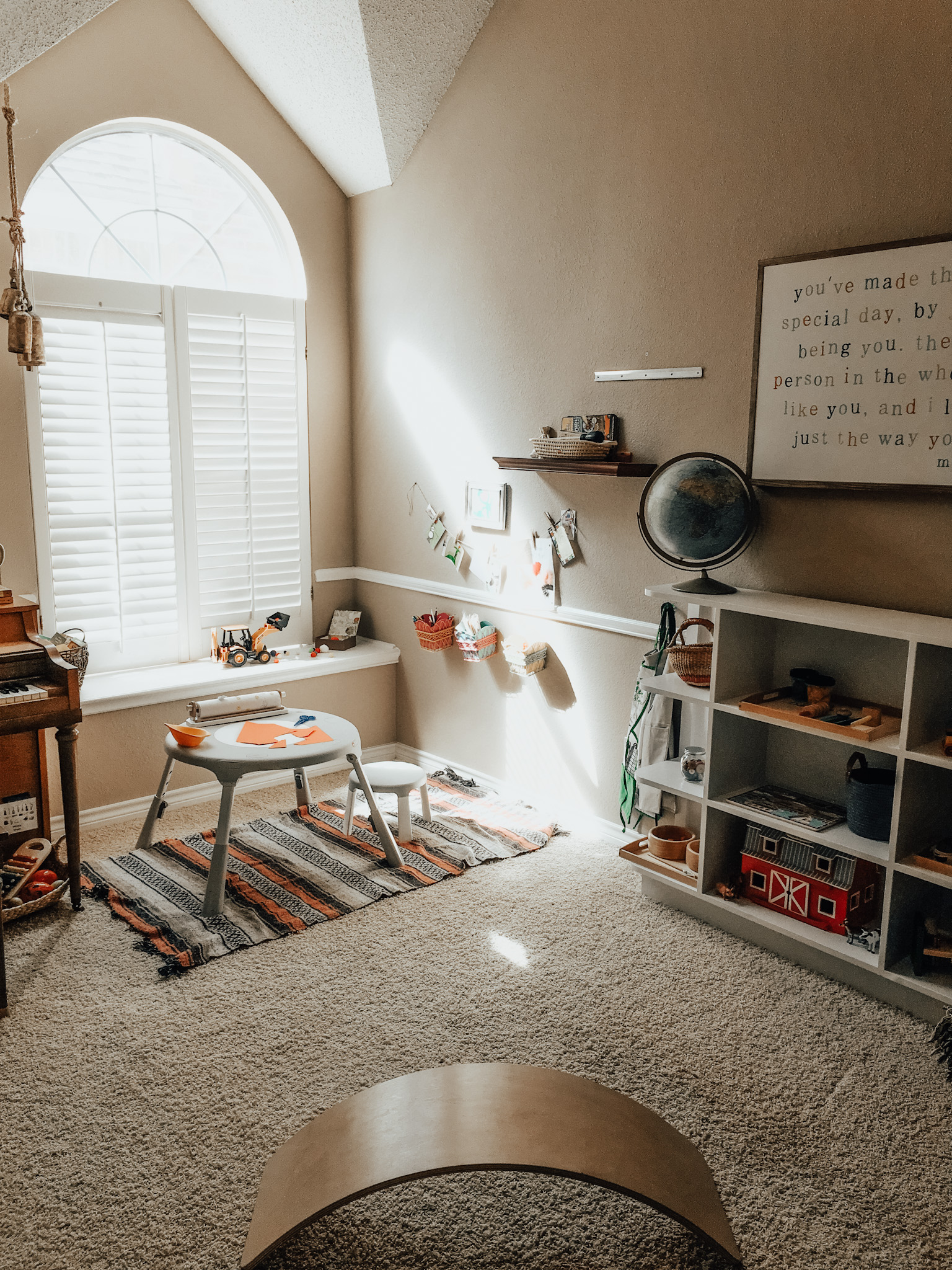
Display books on forward-facing bookshelves or baskets
One way to market reading in the play space is to use a forward-facing bookshelf or basket of books. You could also just line up books facing forward on the floor leaning against a wall. The idea is children will be more intrigued by seeing the book covers than just looking at book spines. (Pillows on the floor make a cozy reading nook!)
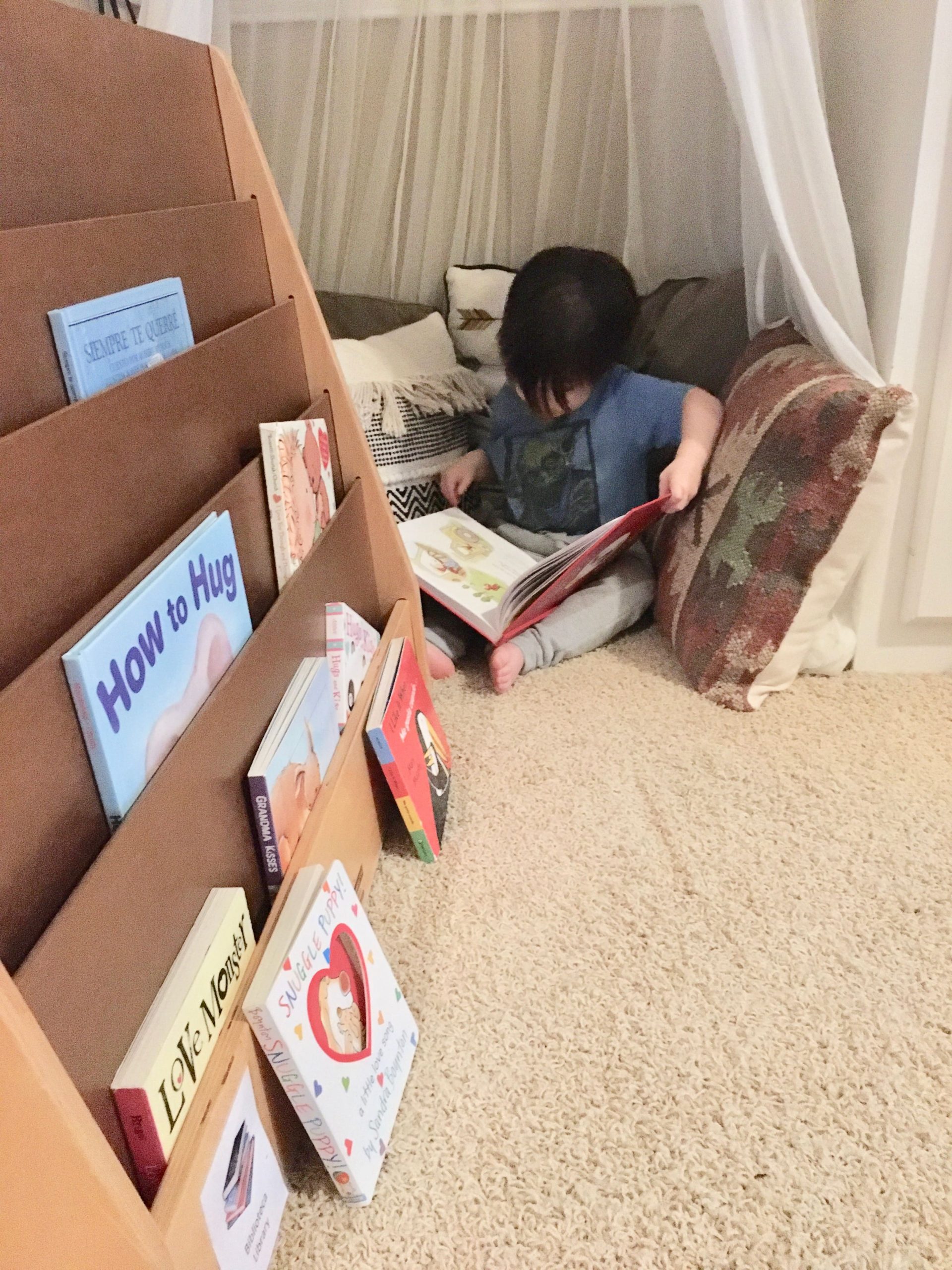
Have a space for everything – and keep everything in its space
When the play space is predictable and toys have a “home,” a child will learn to find what they want and clean up independently when they finish. Early on, it will require more effort for the parent to model consistent tidiness by guiding the child to put toys back in their designated space before moving on. However, after learning the new routine, your child will thrive on order and save you time and energy cleaning house later!
Prepare the toy for play and interaction
What fun is an activity that is already done for you? When presenting puzzles and problem-solving toys, deconstruct them first. Invite children to complete a puzzle by offering pieces off to the side. When you notice the child has “completed” the activity by putting it together and has moved on to a new toy, don’t forget to again disassemble the toy, ready for the child to do again later.
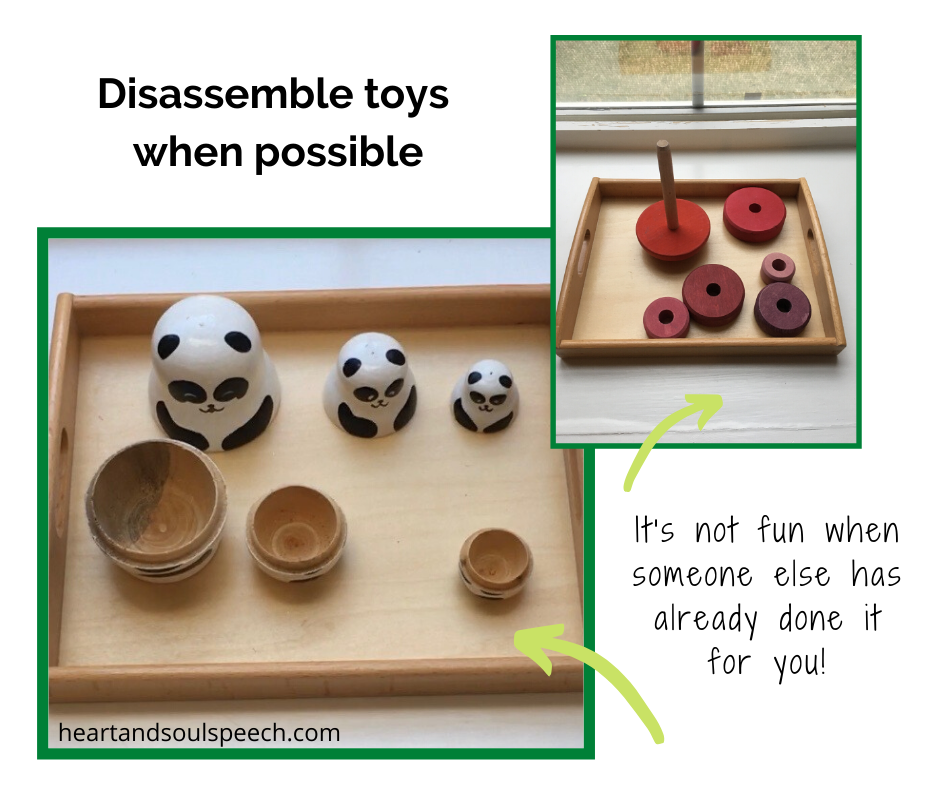
Play on a tray!
This is one of my very favorite strategies! When a toy has many pieces, it can be overwhelming and actually discourage children from playing appropriately with the toy. Pieces get scattered around and children lose focus and interest. By using placemats, trays, or shallow baskets to define the play space, it makes the activity more visually appealing and will increase concentration and productivity. It’s also much easier for children to clean up when they are finished! You can read more about how to set up Montessori trays at the Kavanaugh Report.
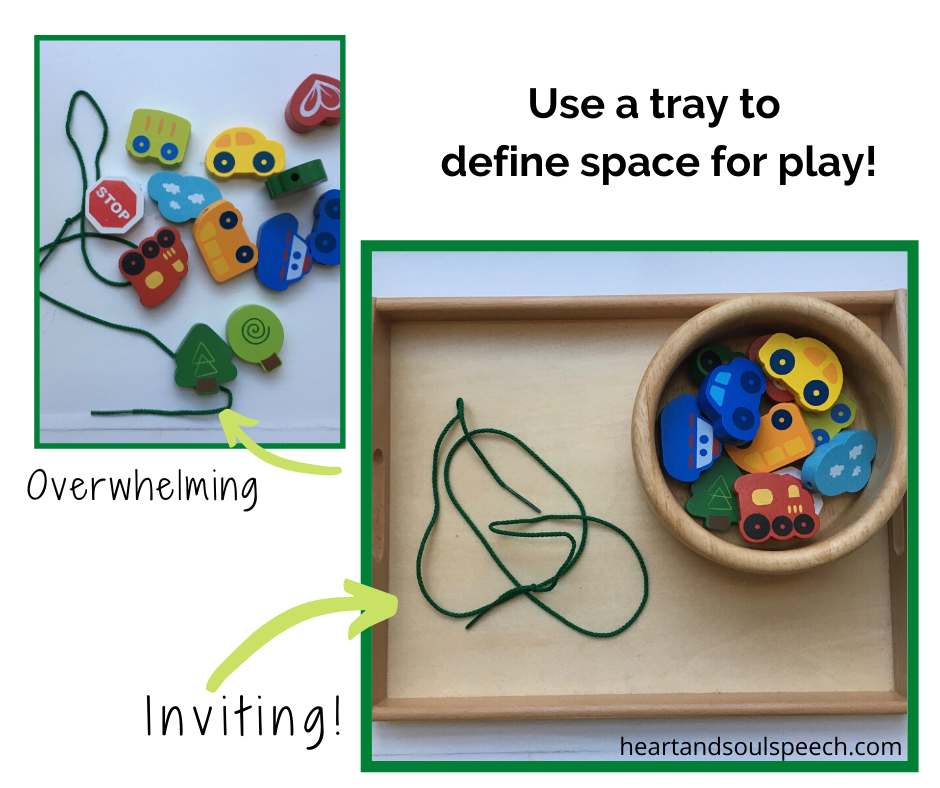
Edit the toy
“100 piece set!” “Comes with 12 accessories!” Don’t let these persuade you – we want quality over quantity in the play space. Try only offering a few pieces at a time to decrease sensory overload and keep the toy interesting.
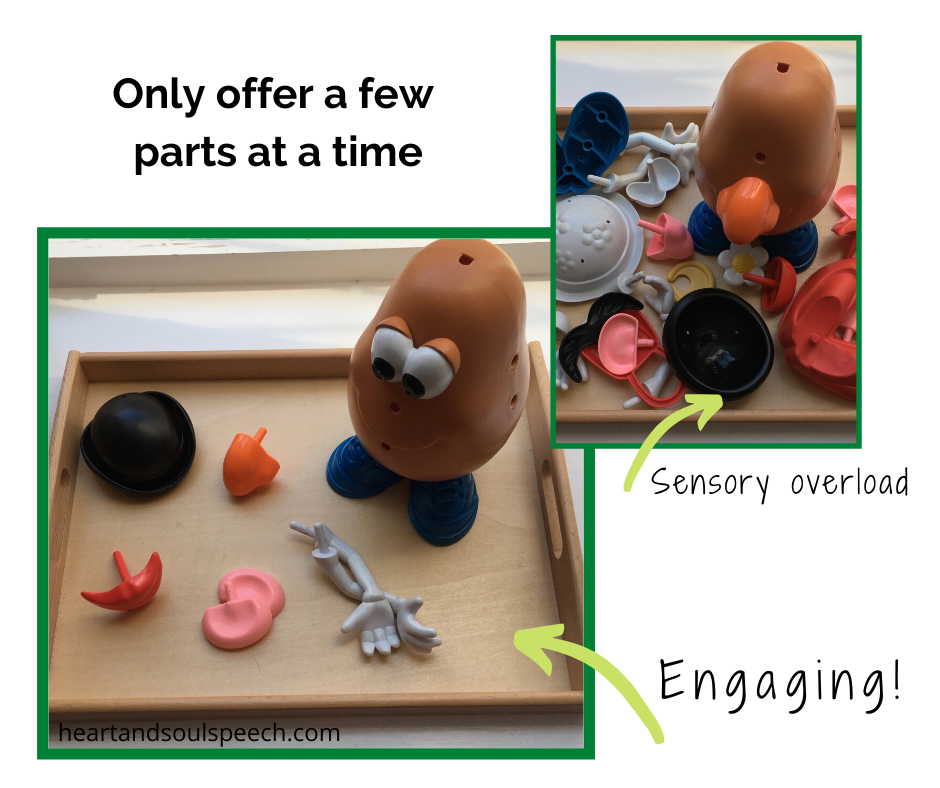
Try out toy rotation
Toy rotation keeps toys new and interesting. It decreases clutter and doesn’t overwhelm the child with too many possibilities. Fewer toys also mean less time cleaning them up! Children develop new skills when presented with a variety of activities over time, so it’s likely they will demonstrate more advanced play the next time they see the toy.
Start by making a note of what your child is really interested in right now. Consider which toys and activities are supporting their developmental needs. Aim to offer 8-12 toys and put the others away for the next rotation. I try to rotate at least a few toys every other week. If he’s still regularly using a toy, I will keep it out for longer so he can continue his learning. Don’t stress over it, just follow your child’s lead.
HOW TO CHOOSE INVITING TOYS
Follow Your Child’s Interests
Let your child’s interests and developmental needs guide your play spaces and the toys you offer. As your child’s needs change, you can adjust the space to grow with them. In our own home, I try to rotate toys and activities that promote learning in these seven areas of development:
- Literacy (reading independent and together)
- Music
- Art/Creative-making
- Developmental Interests
- Pretend Play
- Sensory exploration
- Gross motor/fine motor
So for our current toy rotation for the toddler, it looks like the following pictures. You can see how some of the activities overlap across the categories.
Reading area
10 books displayed in a forward-facing bookshelf for him to “read” independently or together in a quiet cozy nook. I try to rotate out the books every other week.
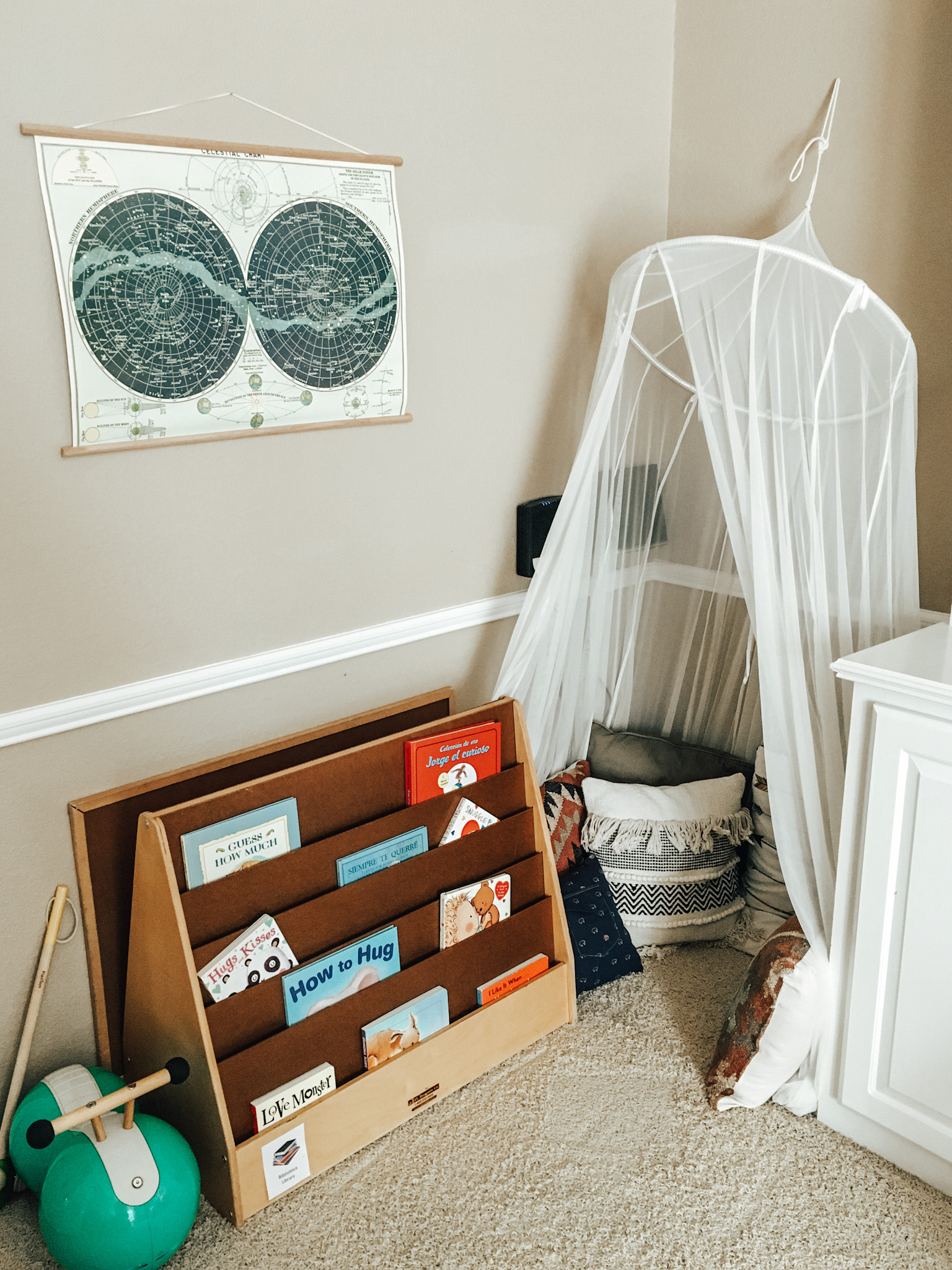
Music Basket
We keep a basket of a few musical instruments and sometimes add a book about music. (Homemade instruments are fun too!) Music promotes language skills, supports pre-literacy learning, and fosters sensory development. It’s also great motor planning and coordination practice.

Art/Creative Making Space
We keep a child-sized table and stools out with access to crayons, colored pencils, paper, child-friendly scissors, and stickers. I keep other craft supplies that he can use under supervision on the high shelf, so he can see and request them if he desires.

Developmental Interests
Honestly, the things that hold my toddler’s interest the longest usually aren’t traditional toys, but rather random things he finds around our home. That’s why I try to offer everyday “non-toys” too. When he discovered my spare button jar on the play shelf, it was like he found a treasure chest!
Save money just by looking for interesting things to play with around your home! These items often engage children in natural exploration and target a variety of developmental and life skills. While he was playing with the buttons, he was naturally learning concepts of quantity, sorting, sizing, and colors. His other interests at this time are pandas and things that go, so there’s some panda nesting dolls and a transportation puzzle on his shelf as well.
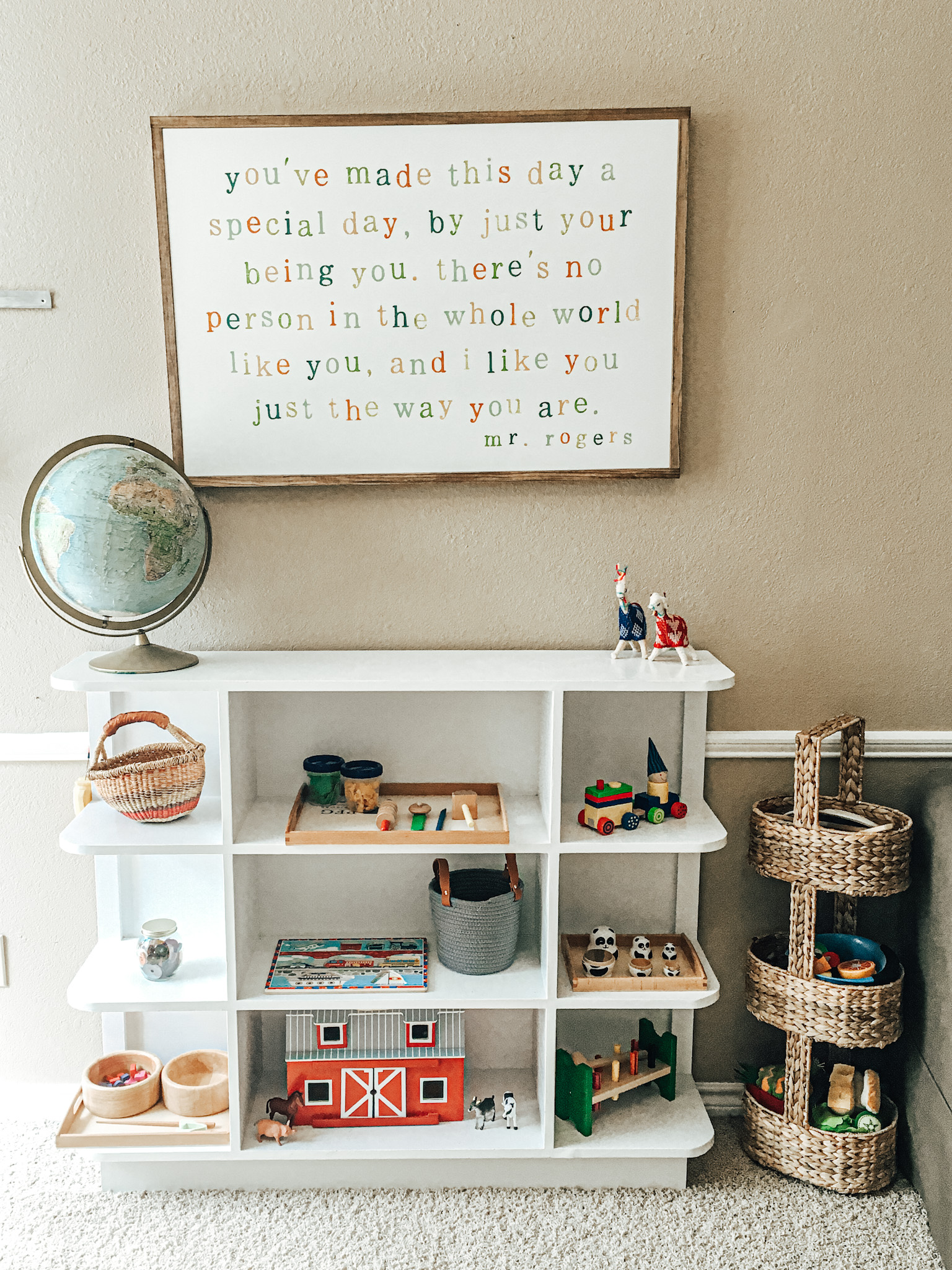
Pretend Play
Pretend play is an important cognitive process and great for language development too. Right now, my toddler is really into role-playing and story-telling, so I have more pretend play activities out. We have finger puppets in the small basket top left, a train toy on the top right, pretend play foods in the 3-basket stand, and a toy barn with a few animals on the bottom.
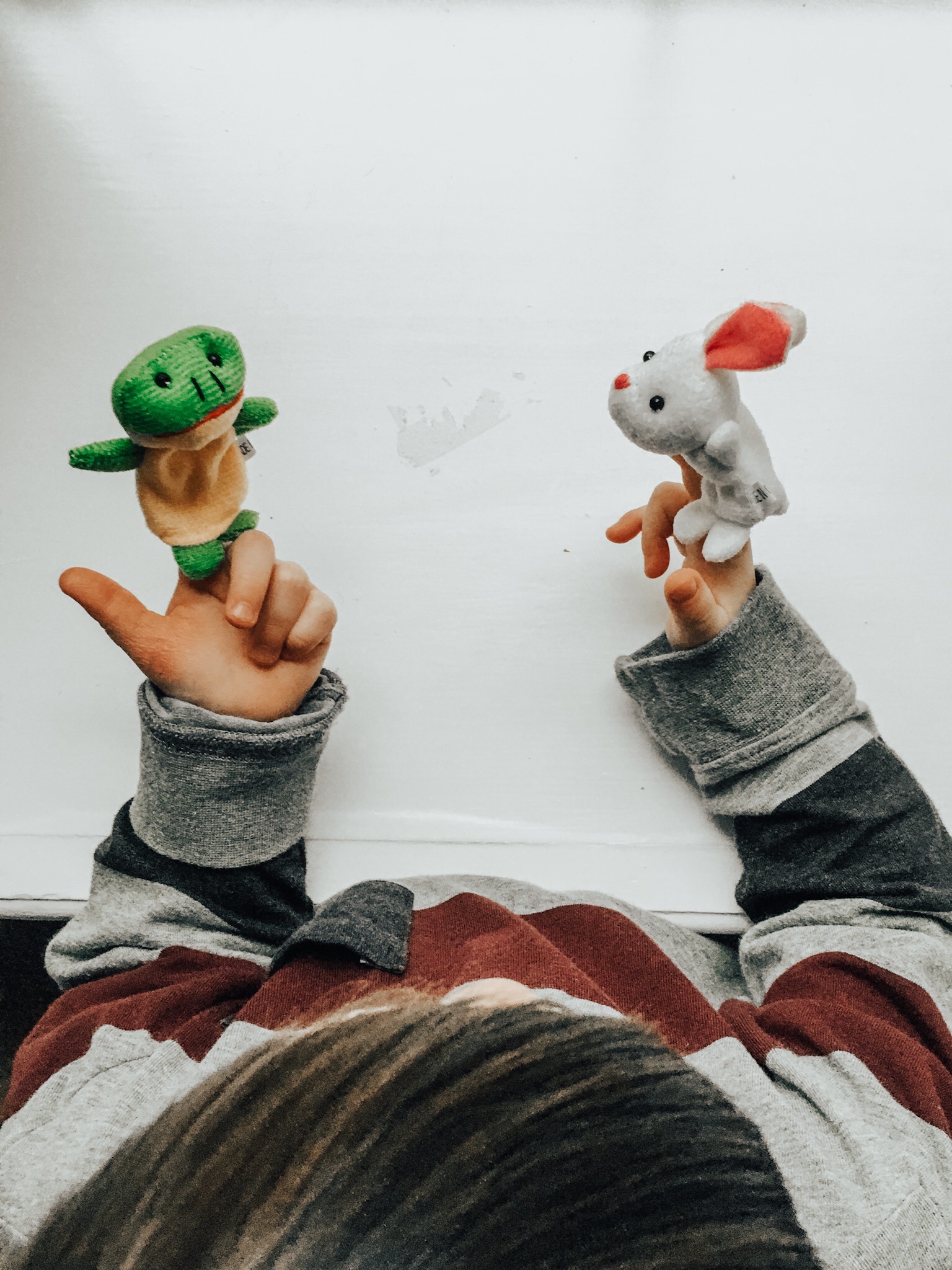
Sensory Exploration
We all learn through sensory information in our environment – touching, smelling, hearing, tasting, seeing. I still have to supervise most of the sensory activities as they can be messy. This rotation, he’s been experimenting with playdough and different tools. Sometimes our sensory activity is more like a craft (finger painting) or a sensory bin full of uncooked beans for him to “dig” in.

Gross/Fine Motor Work
Our gross motor (big muscle) and fine motor (small movements) work is often targeted through activities covered in other areas of development.
We don’t have many gross motor toys because most of our work is done through games like jumping, pushing, crawling, or playing outdoors. However, I did set out hammering toy this time after he was interested in Daddy hanging a picture on the wall. Using scissors and stickers are great for fine motor development. I also set out a chopstick transfer tray with foam shapes for his practice.
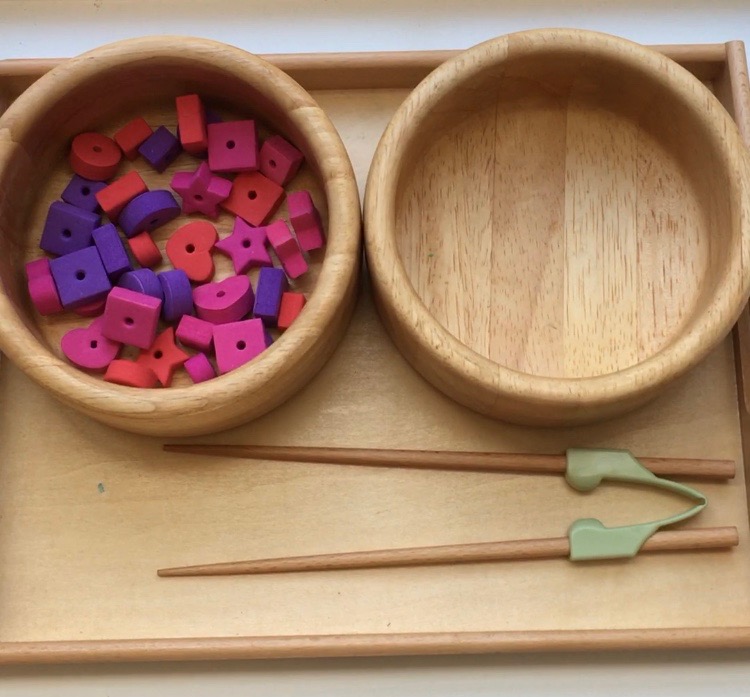 (**Bonus tip: present trays working left to right when possible to promote early reading skills!)
(**Bonus tip: present trays working left to right when possible to promote early reading skills!)
Toys: Few, Simple, and Open-Ended
One study showed 10-year-old children in developed countries own over 200 toys, but only play with 12 of them on average per day. According to Psychology Today, kids who were given fewer toys focused more, were more engaged, played more creatively, and (quality of play) interacted with their toys in more varied ways for longer periods of time. Less chaos can lead to increased focus and more joy.
Toys are tools, not teachers. Open-ended and non-electric toys (no screens, sounds, or lights) are often better choices for productive play and learning. The American Academy of Pediatrics (AAP) reports “the most educational toy is one that fosters interactions between caregivers and children in supportive, unconditional play.”
So there you have it! – My ultimate list of tips and tricks for preparing spaces ready for play! Here’s to hours of play with your little ones!
What ways have you found to engage your children in play?
Related Articles:
